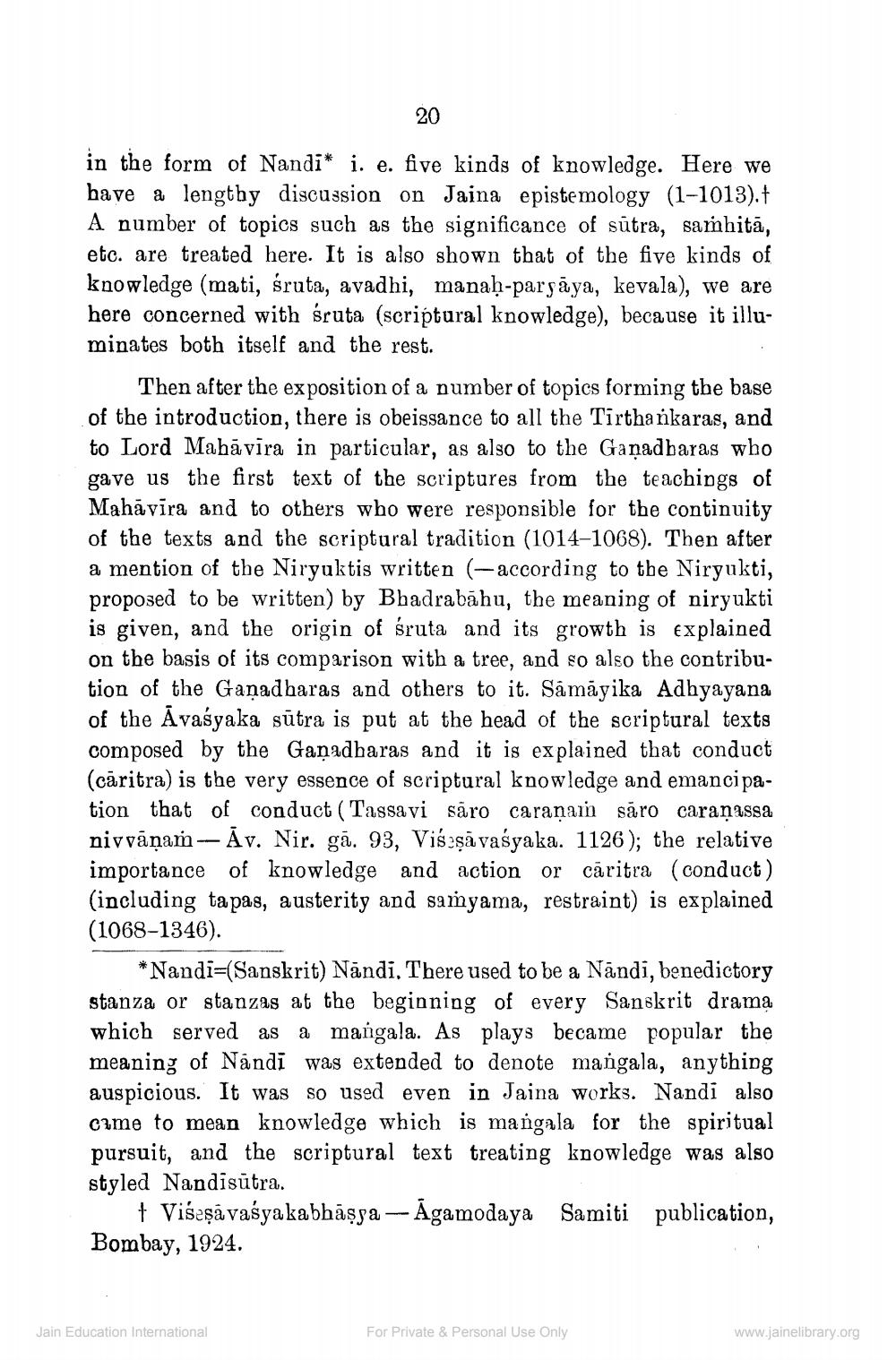________________
20
in the form of Nandi* i. e. five kinds of knowledge. Here we have a lengthy discussion on Jaina epistemology (1-1013). A number of topics such as the significance of sūtra, samhitā, etc. are treated here. It is also shown that of the five kinds of knowledge (mati, śruta, avadhi, manaḥ-parpāya, kevala), we are here concerned with śruta (scriptural knowledge), because it illuminates both itself and the rest.
Then after the exposition of a number of topics forming the base of the introduction, there is obeissance to all the Tirthankaras, and to Lord Mahāvīra in particular, as also to the Ganadbaras who gave us the first text of the scriptures from the teachings of Mahāvīra and to others who were responsible for the continuity of the texts and the scriptural tradition (1014-1068). Then after a mention of the Niryuktis written (-according to the Niryukti, proposed to be written) by Bhadrabāhu, the meaning of niryukti is given, and the origin of śruta and its growth is explained on the basis of its comparison with a tree, and so also the contribution of the Gañadharas and others to it. Sámāyika Adhyayana of the Āvaśyaka sūtra is put at the head of the scriptural texts composed by the Ganadbaras and it is explained that conduct (căritra) is the very essence of scriptural knowledge and emancipation that of conduct ( Tassavi sāro caraṇam sāro caraṇassa nivvāņam- Av. Nir. gā. 93, Višaşā vaśyaka. 1126); the relative importance of knowledge and action or caritra (conduct) (including tapas, austerity and samyama, restraint) is explained (1068-1346).
* Nandi=(Sanskrit) Năndi. There used to be a Nandi, benedictory stanza or stanzas at the beginning of every Sanskrit dramą which served as a mangala. As plays became popular the meaning of Nándi was extended to denote mangala, anything auspicious. It was so used even in Jaina works. Nandi also cime to mean knowledge which is mangala for the spiritual pursuit, and the scriptural text treating knowledge was also styled Nandīsūtra.
+ Višeşāvaśyakabhāṣja - Āgamodaya Samiti publication, Bombay, 1924.
Jain Education International
For Private & Personal Use Only
www.jainelibrary.org




